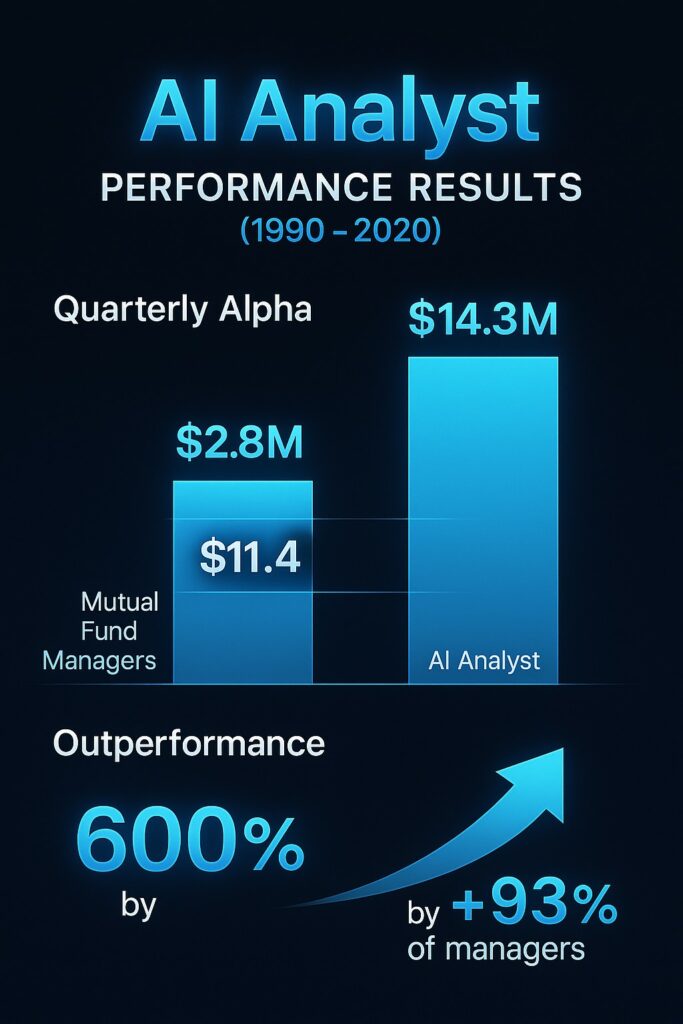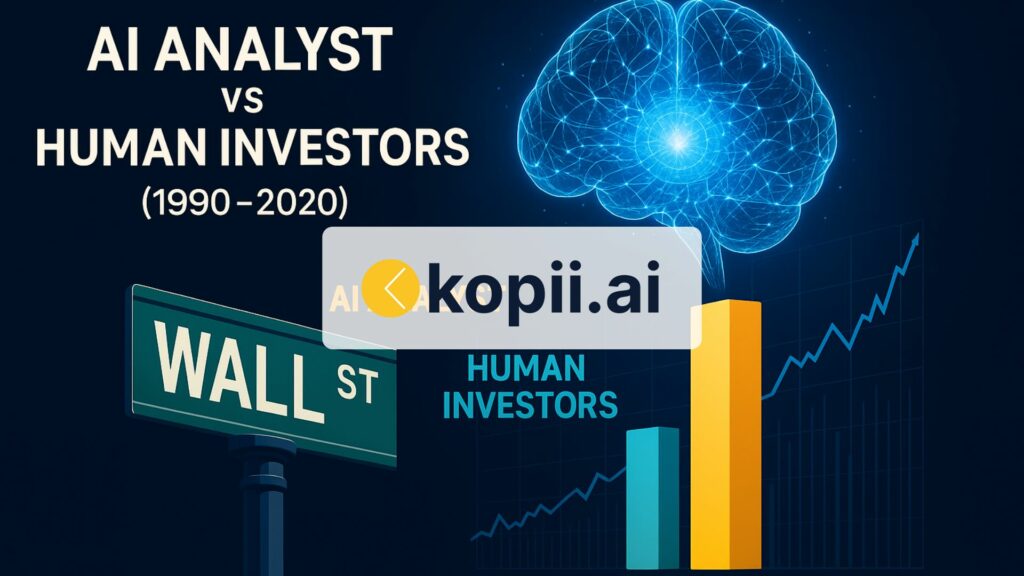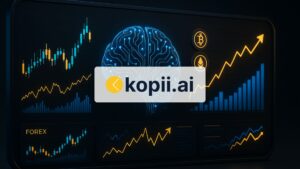A new study shows that an AI-powered investment analyst dramatically outperformed professional fund managers across three decades, raising big questions about the future of human-driven investing.
Researchers at Stanford Graduate School of Business and Boston College built an “AI analyst” to test how effectively machine learning could improve mutual fund returns using only public information. The results shocked even the creators: AI outperformed 93% of mutual fund managers, delivering 600% higher benchmark-adjusted returns between 1990 and 2020.

How the AI Analyst Worked
The research team — Ed deHaan, Suzie Noh, Chanseok Lee, and Miao Liu — developed the model with one key rule: it could only use data that real fund managers had access to at the time.
- Training Data: Market data from 1980–1990, including 170 variables like Treasury yields, credit ratings, earnings call sentiment, and regulatory filings.
- Portfolio Adjustments: The AI could only make quarterly tweaks to existing fund portfolios, maintaining their risk levels and core structures.
- Rebalancing Process: Each quarter, the AI replaced likely underperforming assets with stronger alternatives or index funds.
By repeating this process across 3,300 U.S. equity mutual funds, the AI delivered an additional $17.1 million in alpha per quarter, compared to the $2.8 million generated by human managers.
Stunning Outperformance
- Timeframe: 30 years (1990–2020)
- Funds analyzed: ~3,300 actively managed U.S. equity mutual funds
- Human performance: $2.8M quarterly alpha
- AI performance: $17.1M extra per quarter
- Result: AI outperformed 93% of fund managers by 600%
The findings were so extraordinary that researchers spent a year double-checking the model for errors — but none were found.

Why AI Succeeded
Interestingly, the AI didn’t rely on exotic variables or hidden data. Instead, it squeezed maximum predictive value out of simple factors like:
- Company size
- Dollar trading volume
- Public sentiment in filings and earnings calls
This suggests that much of the market’s inefficiency lies in the processing cost of public data. Human analysts could, in theory, replicate the AI’s work, but the cost of analyzing such massive datasets has historically been prohibitive.
What This Means for Investors
While the results highlight AI’s enormous potential, there are caveats:
- First-Mover Advantage: If every investor used the same AI tools, the edge would diminish.
- Role of Humans: AI is powerful, but researchers believe clever human strategists will always be needed for novel approaches and broad decision-making.
- Automation of Routine Work: Expect fund managers to increasingly rely on AI for data collection, portfolio screening, and signal detection, freeing humans to focus on strategy.
The Future of AI in Asset Management
The research underscores how AI could reshape professional investing:
- Funds may automate the grunt work of analyzing disclosures and sentiment.
- AI could serve as a portfolio co-pilot, optimizing holdings within human-set risk limits.
- Fully autonomous AI-managed funds are possible — but regulatory, ethical, and trust concerns remain.
As Ed deHaan put it:
“It’s the same story we see with AI everywhere. Complex tasks that once required teams of humans can now be automated — but humans will still matter in shaping strategies.”






